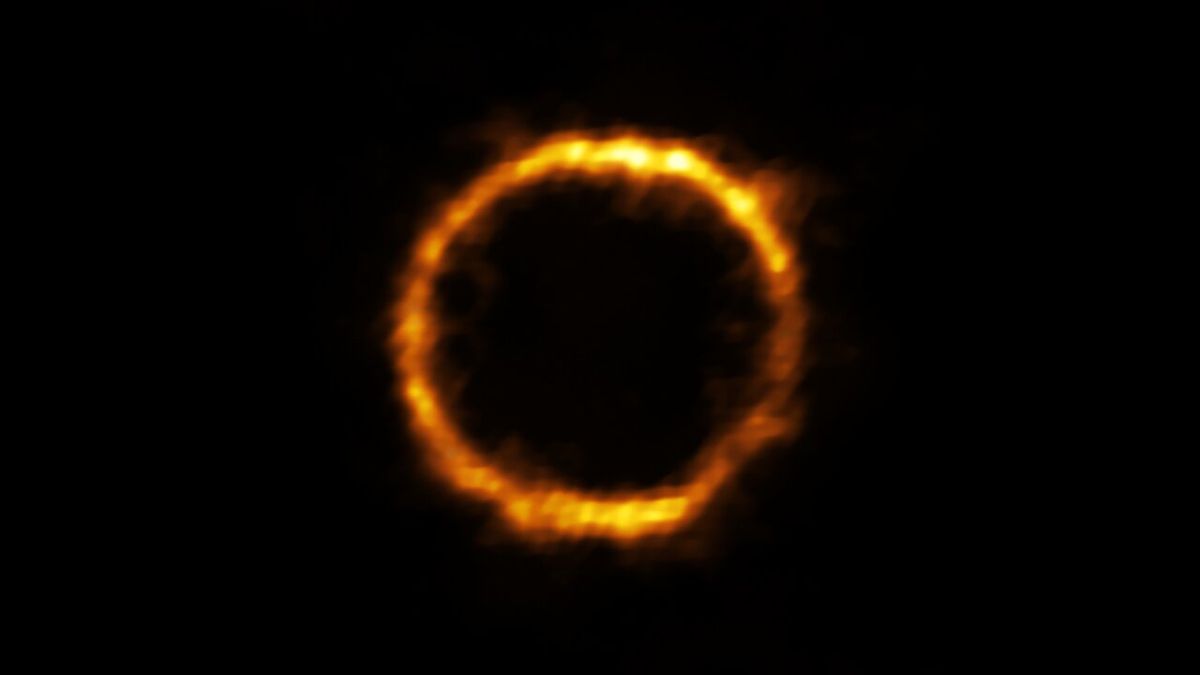Science
Related: About this forumJames Webb Space Telescope spots galaxy from early universe rich in star formation
By Samantha Mathewson published about 11 hours ago
'We found this galaxy to be super-chemically abundant, something none of us expected.'

A gravitationally lensed view of a ring-shaped slice of the galaxy SPT0418-47, as seen by the ALMA array in Chile. Recent observations by NASA's James Webb Space Telescope reveal that the galaxy has a satellite that's rich in star formation.
A gravitationally lensed view of a ring-shaped slice of the galaxy SPT0418-47, as seen by the ALMA array in Chile. Recent observations by NASA's James Webb Space Telescope reveal that the galaxy has a satellite that's rich in star formation. (Image credit: ALMA (ESO/NAOJ/NRAO), Rizzo et al.)
New images from NASA's James Webb Space Telescope (JWST) have revealed that a well-known early galaxy has an overshadowed companion that is abundant with star formation.
JWST's initial target was SPT0418-47, one of the brightest dusty, star-forming galaxies in the early universe. Given it is an extremely distant galaxy — it lies about 12 billion light-years from Earth — its light is bent and magnified by the gravity of another galaxy in the foreground (located between SPT0418-47 and the space telescope), creating a near perfect circle called an Einstein ring.
Using the JWST, astronomers were able to get a clearer view of SPT0418-47 and spotted a curious blob of light shining near the galaxy's outer edge. As it turns out, the blob represents a companion galaxy previously overshadowed by the light of the foreground galaxy, according to a statement(opens in new tab) from Cornell University.
"We found this galaxy to be super-chemically abundant, something none of us expected," Bo Peng, lead author of the study and a doctoral student in astronomy at Cornell, said in the statement. "JWST changes the way we view this system and opens up new venues to study how stars and galaxies formed in the early universe."
More:
https://www.space.com/james-webb-space-telescope-metal-rich-galaxy-photo
patphil
(6,950 posts)Every few years scientists discover something that rewrites the book on the creation of a Universe.
That's going to happen again and again for quite some time; maybe as long as humanity exists.
For example, I am not at all sure that black holes are sucking up matter.
Perhaps energy is pouring out of black holes, transforming into matter, and forming stars that eventually form galaxies. It could be the way this Universe grows.
Just a thought for all of you amateur astronomers out there.
Chainfire
(17,757 posts)patphil
(6,950 posts)I do know that black holes emit massively powerful x-rays. I would think that what would come out of a black hole would be pure energy, and not have any measurable mass.
But it does appear that mass and energy are inter convertible, so It would seem possible that energy could become mass, i.e. hydrogen, the building block of our Universe.
Grins
(7,889 posts)…is giving us all FAR MORE bang for the buck in “Holy shit, how neat is that???” points than we imagined.